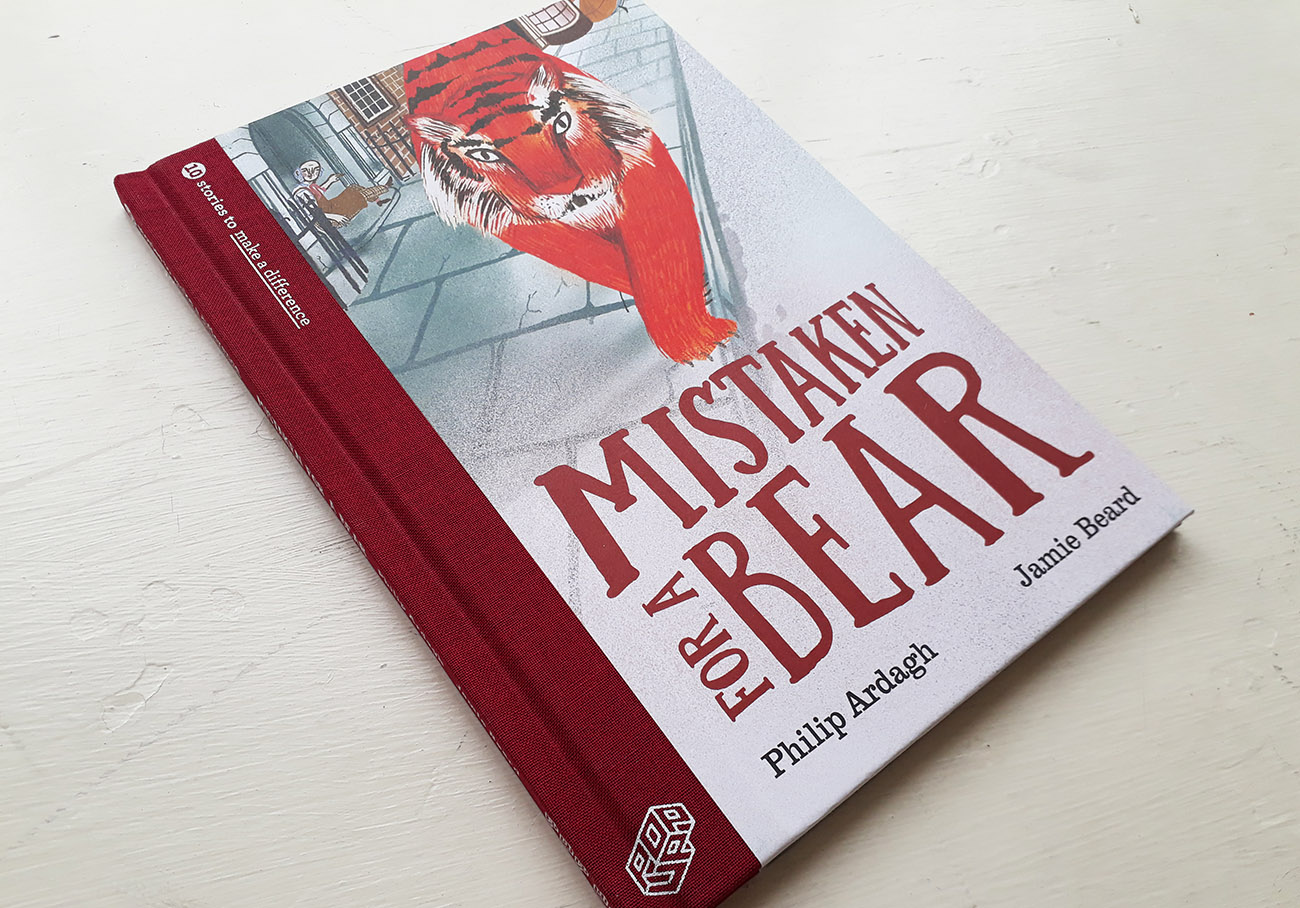Mistaken For A Bear – Book Review
Written by Philip Ardagh
Illustrated by Jamie Beard
Published by Pop Up ISBN 978-1-8383-2356-1
Review by Karl Andy Foster
Mistaken for a Bear is part of Pop Up’s 10 Stories to Make a Difference collection: ten original illustrated stories for young readers, all inspired by the theme of Difference. The collection features a mix of well-known and emerging writers and illustrators, giving a platform to untold stories and diverse new voices. I commend this enterprise and it is long overdue. Important work is being done and we need to build on this approach to telling our stories.
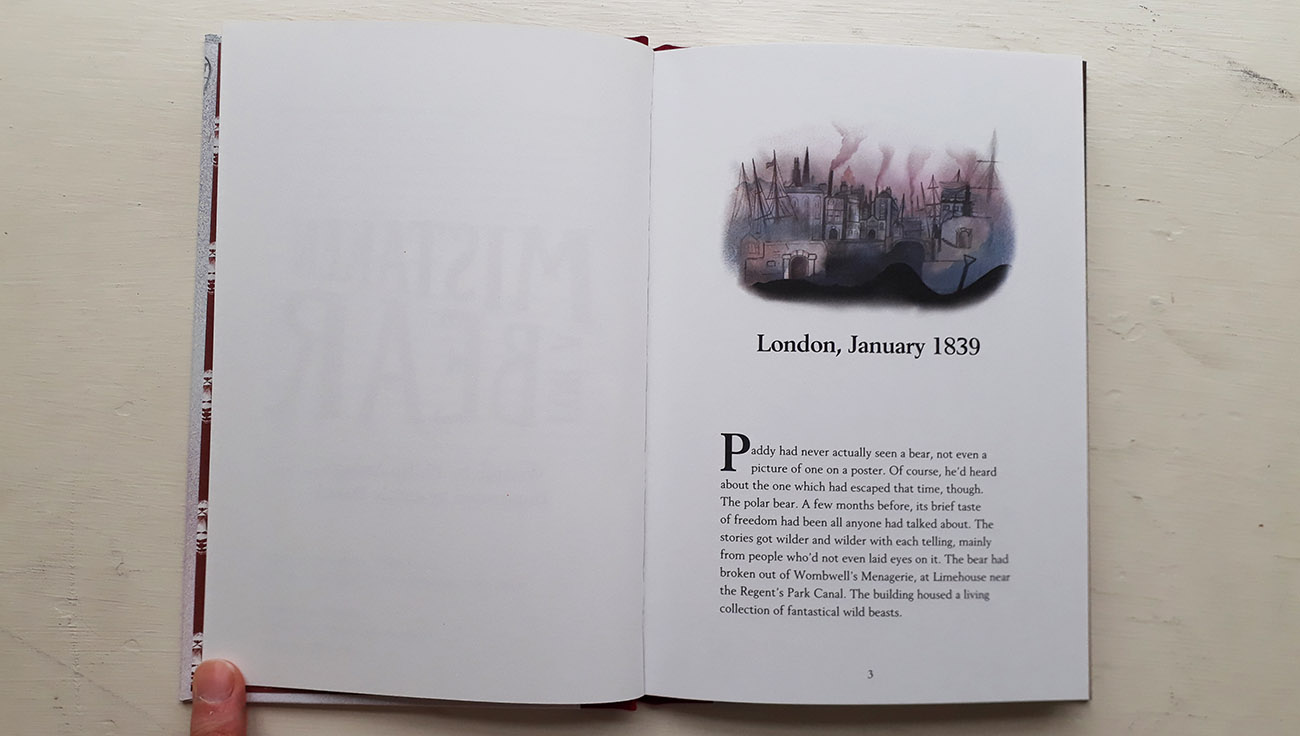
In this enlightened story the simple truths of our lived experiences are told. Through a surprising turn of events a young dock worker discovers more about the community that he and others from far and wide belong to. In 1839 London, a time when photography was in its infancy, a Tiger gets mistaken for a Bear! Due to human curiosity the main characters Patrick and Ash come a bit too close to this Bear for comfort. It is soon clear that Ash is the only one who knows that it isn’t a Bear at all. This conundrum is repeated in the end papers of this hardback book; they display a pattern of tiger heads, or is that a bear I spy?
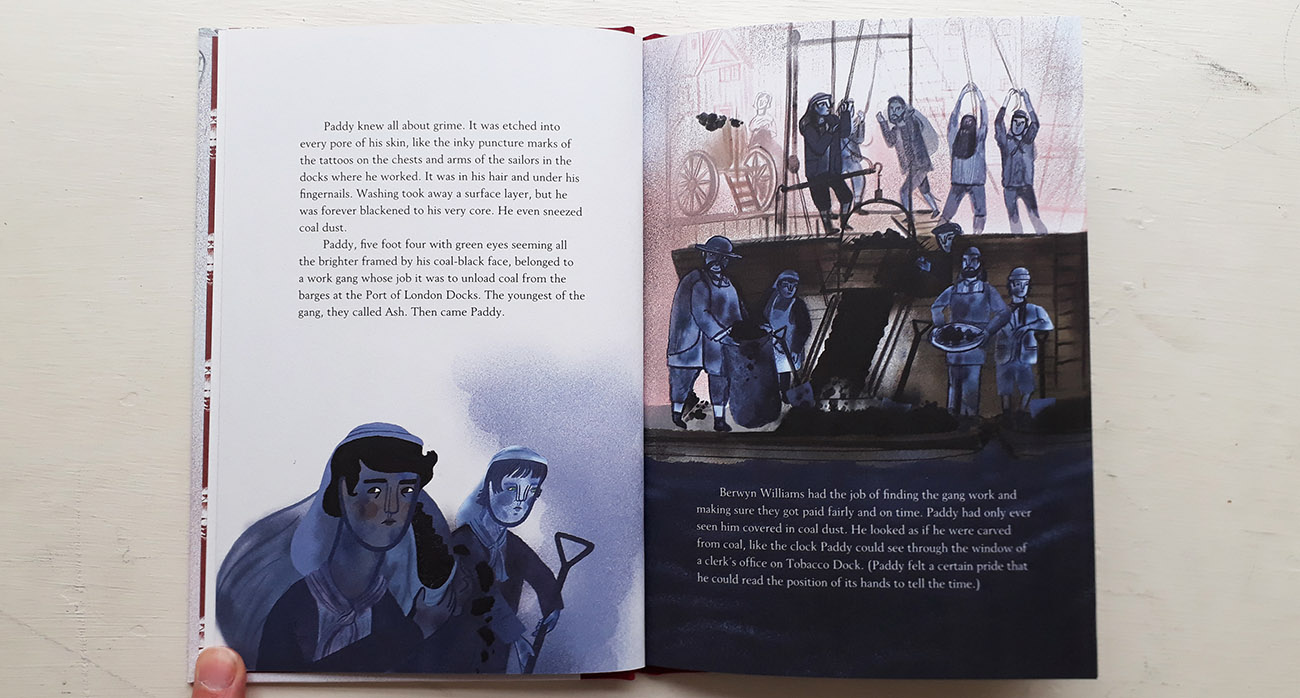
We see the consequences of the British Empire at work within the class system, the collecting of ‘specimens’ from across the globe by Mr. Wombwell and the fact that London has always been a cosmopolitan city devoted to the amassing of capital. Jamie Beard’s illustrations are dark and atmospheric and place us in the grime of London that many would have had to endure daily as they sought their living. This is not the world of the musical Oliver! But it is the world of Dickens’ Oliver Twist (a serialised publication during this period), it’s tough and unforgiving.
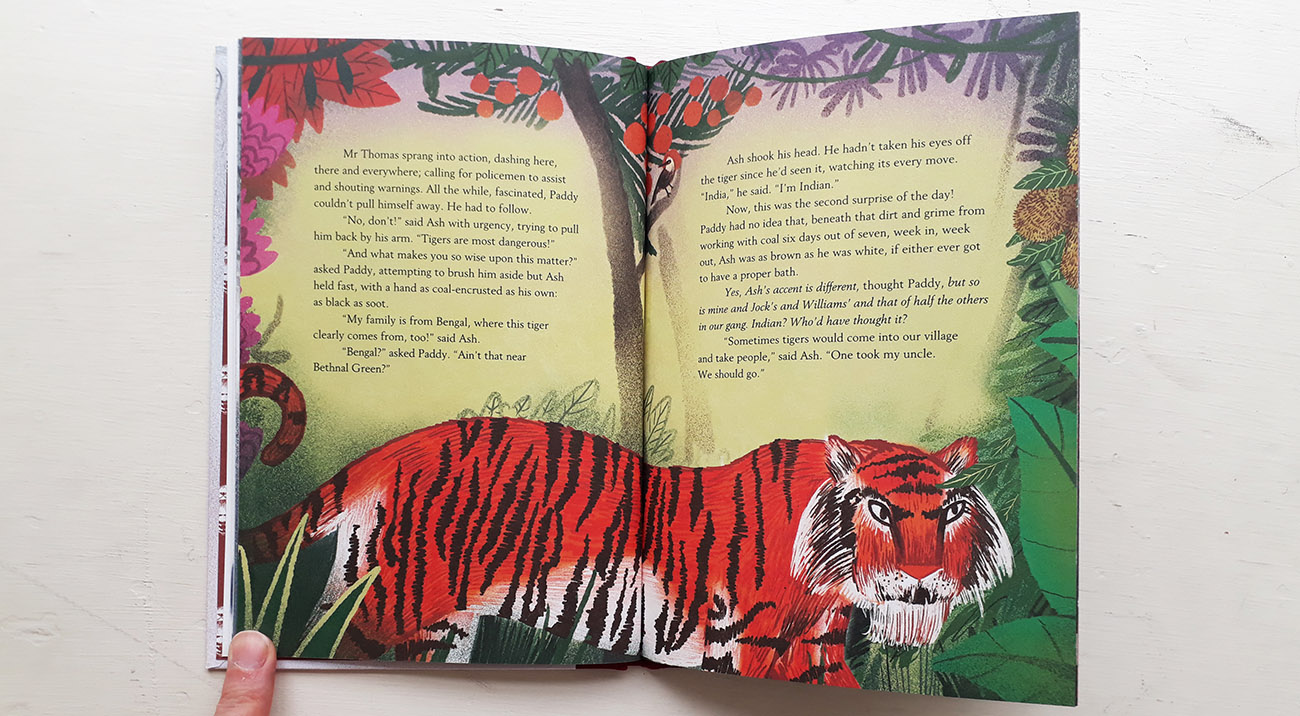
Author Philip Ardagh knows what he is doing when he refers to the fact that the dock workers wouldn’t know each other without the soot covering their faces. He is championing the underclass and the rootless as they intersect with authority and Protestant values. He is also working in a tempo that is reminiscent of The Lion and Albert monologue and Edward Lear’s nonsense limericks. The Author’s Note section is important to our understanding of the story as it gives us further context and explains what happened to the character of Patrick.
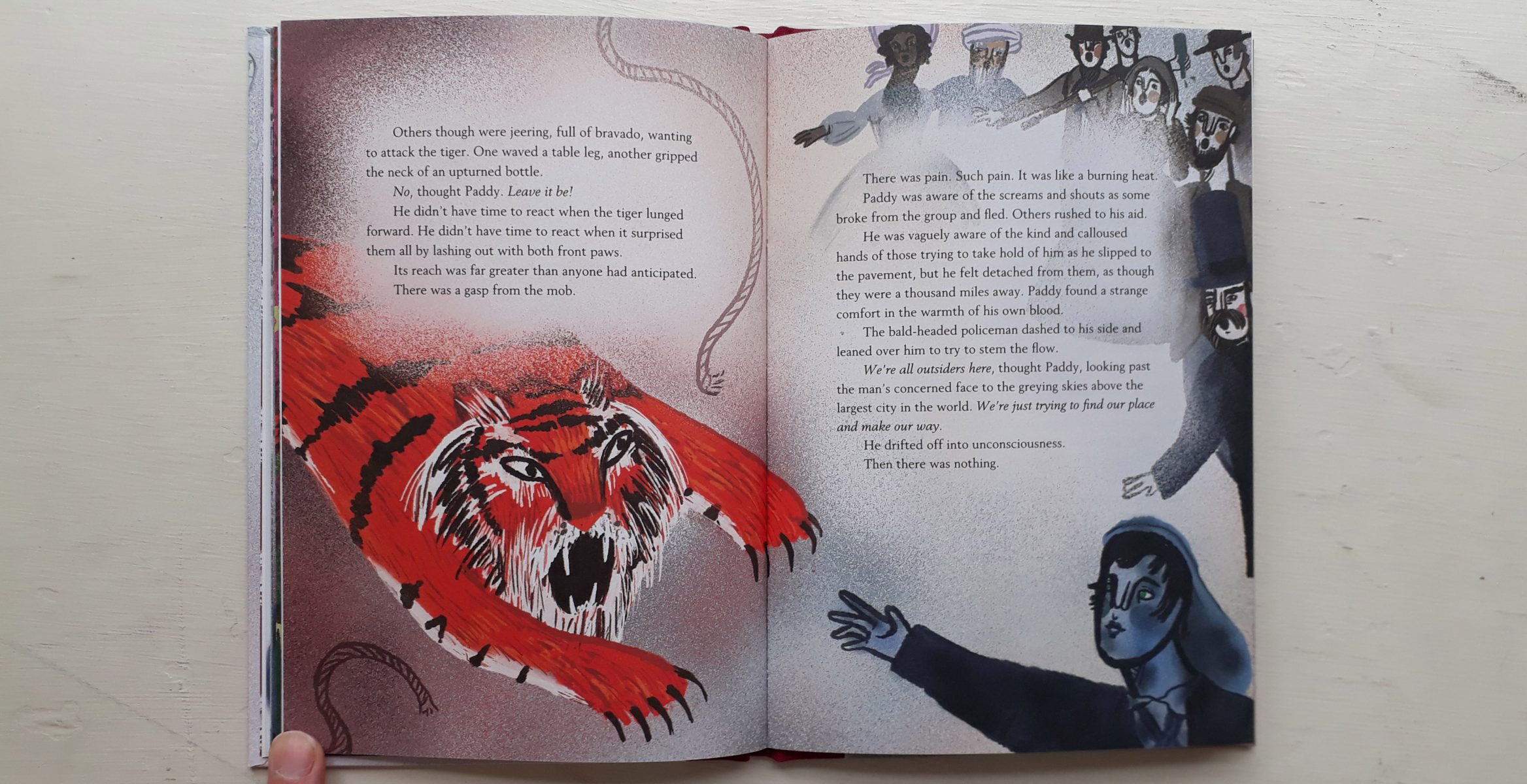
I think that this story will encourage young readers to investigate the history of London and the UK. They will find new ways to position themselves within this ‘grand’ narrative. Can they discover other things we might be mistaken about?
See another review by Karl Foster from the 10 Stories to Make a Difference series here
Back to News Page

